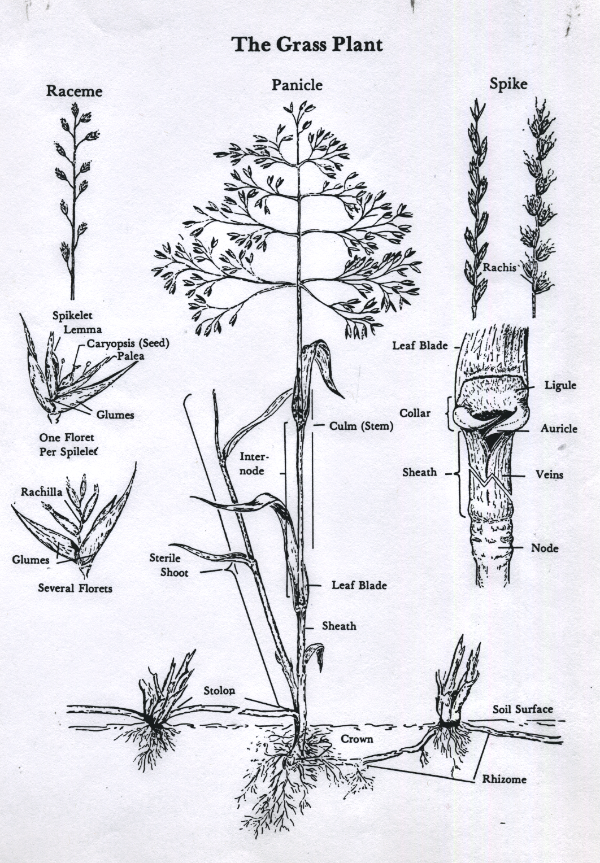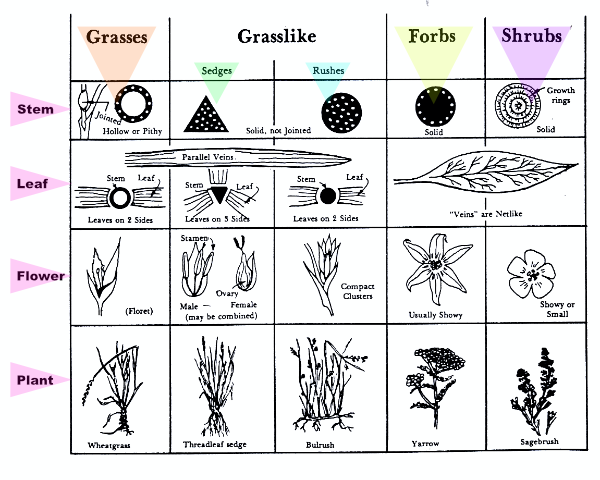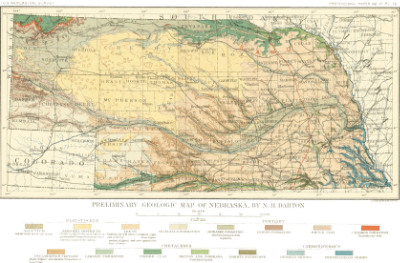Grasslands & the Sandhills of Nebraska
Grasslands, ranges, & their communities of life
You cannot protect the environment unless you empower people, you inform them, and you help them understand that these resources are their own, that they must protect them. Wangari Maathai
Introduction
Overview
Grasslands are more important to a sustainable world than most people realize. Grasses are highly diverse with about seven species providing most of the calories we consume. Wheat, maize, and rice provide 50% of the calories eaten by humans as well as much of their protein and micronutrients. In addition to being cultivated as staple grain crops and pastures they provide forage, pasture, and prairie grasses that feed animals that supply meat, eggs, and dairy products. Other food grasses include: sorghum, fonio, millets, barley, sugarcane, as well as turf grasses for recreational areas, and bamboos for construction. Grasses create ecosystems that cover large areas of Earth. They are 20%, of the sixty thousand species of monocots and need to be considered more as solutions for climate change and carbon storage. To do so we need to increase our recognition of their diversity and value. Value in creating fertile soil, reducing erosion and their importance for healthy watersheds, storing carbon dioxide, producing oxygen, providing animal habitat, building materials, as well as food for organisms that live within grassland communities (biomes).
To these ends this page includes resources for grasslands and Nebraska Sandhills as one example of a unique grassland biome.
Grass plant anatomy model

Grassland & range plants

Varieties of grasses
- Big blue stem - tall
- Side Oats Groma - medium
- Switch grass - tall
- Indiangrass - tall
- Tall Fescu
- Buffalo Grass - short
- Blue Groma - short
- Reed Canary Grass
- Perennial Rye Grass
- Birdsfoot Trefoil - medium
- Little Blue Stem - medium
- Crown vetch
- Hairy Vetch - tall
- Crested Wheatgrass - medium
- Intermediate Wheatgrass - medium
- Kentucky Bluegrass - short
- Sericea Lespedeza - tall
- Alfalfa - tall & medium
- Clover
- Milkvetch
- Russian Wild Rye
- Timothy - medium to tall 20-40 inches
- Orchard grass medium - tall 2-4 feet
- Creeping Foxtail
- Prairie Treeawn
- Prairie Sandreed - tall
- Sand Blue Stem - tall
- Sand Lovegrass
- Prairie Condgrass
- Western Wheatgrass - medium
- Green Needlegrass - medium
- Redd CLover - medium - short
- Sweet CLover - tall
Annotated resources for grasslands
HoB resources related to plants
- Plants - framework for teaching plants in elementary grades, support materials for flowering plants - anatomy of leaves, stems, trunk, ...
- Inexpensive wooden light stand & directions for making it.
- Soils and trees - explore types of soils for water absorption, compaction, penetration,
- Trees
- Tree growth - activities to observe trees, notice changes, & make operational definitions to explain environmental causes for the changes. Primary level plan
- Trees - Growth, tree rings, environmental factors - Middle Grades *
- Trees - observing, measuring heights, & finding patterns & relationships (clinometer & scale (Biltmore) stick)
- Wood - Notes on what makes wood heavy. Related to Minds of their own series.
Printed resources
- Agricultural Research Service of the United States Department of Agriculture. (1971). Common Weeds of the United States Prepared by the Agricultural Research Service of the United States Department of Agriculture. New York, NY: Dover Publications, Inc. Descriptions of about 200 weeds, black and white drawings, habitat, and range maps.
- Bai, Yongfei & Cotrufo, M. Francesca. (2022) Grassland Soil Carbon Sequestration: Current understanding, challenges, and solutions. Science August, 5, 2022.
- Bleed, Ann & Flowerday, Charles. Editors. (1990). An Atlas of the Sand Hills Second Edition. Resource Atlas No. 5a. Conservation and Survey Division Institute of Agriculture and Natural Resources University of Nebraska-Lincoln. Includes information on climate, geology, soils, groundwater, hydrogeology, streams, lakes, wetlands, plants, animals, anthropology, land development, and minerals of the Nebraska Sand Hills.
- Brown, Lauren. (1989). Grasslands: The Audubon Society Nature Guides. New York, NY: A Chanticleer Press Edition. Alfred A. Knopf. Includes descriptions a different North American grasslands, color pictures of grasslands, mammals, grasses, shrubs, wildflowers, butterflies, moths, insects, spiders, trees, birds, mushrooms, amphibians, and reptiles.
- Buisson, Elise, et. al. (2022) Ancient Grasslands Guide Ambitious Goals in Grassland Restoration. Science August, 5, 2022. Restoration is much harder than spreading a few seeds. It takes years to begin to achieve a healthy grassland environment.
- Farrand, John, Jr. (1983). The Audubon Society Master Guide to Birding. New York, NY: Alfred A. Knopf. Three volumes:
- Ducks, loons, grebes, eagles.
- Gulls to dippers.
- Old world warblers to sparrows. Pictures and descriptions of all North American Birds.
- Grieve, Mrs. M. (1971). A Modern Herbs. New York, NY: Two volumes. Dover Publications, Inc. Includes alphabetized entries about herbs, grasses, fungi, shrubs, and trees. Entries include medicinal, culinary, cosmetic, economic, cultivation, folk-lore, and modern scientific uses.
- McSteen, Paula, & Kellogg Elizabeth. (2022) Molecular, Cellular, and Developmental Foundations of Grass Diversity. Science August, 5, 2022. Grass being a monocot, the information is an excellent source to support learning about the structures of seeds and plants.
- Niering, William A. & Olmstead, Nancy, C. (1979). The Audubon Society Field Guide to North American Wildflowers. New York, NY. Alfred A. Knopf.
- Volumes for Eastern region and Western region. Includes descriptions, flowering times, habitats, ranges, and comments.
- Olaus, J. Murie. (1974). A Field Guide to Animal Tracks. Second Edition. Boston, MA: Houghton Mifflin Company. Book from the Peterson Field Guide series. Sponsored by the National Audubon Society and the National Wildlife Federation. Includes descriptions and over 1000 illustrations of the habits, habitat, tracks, signs, droppings, gnawed trees, and suggestions on where to look for tracks and how to preserve them.
- Peterson, Roger Tory. (1980). Eastern Birds. Fourth Edition. Boston, MA: Houghton Mifflin Company. All birds of eastern and central North America shown in full color and descriptions.
- Reese, Patrick, E., & Moser, Charles, P. (1985). Nebraska Poisonous Range Plants. University of Nebraska Cooperative Extension Service. EC 85-198. Describes common poisonous range plants and their affects on livestock. Descriptions include diagnosis, toxic compounds, toxic minerals, treatment, and management of livestock and plants.
- Strombert, Carolina & Staver, A. Carla. (2022). The History & Challenge of Grassy Biomes. Science August, 5, 2022.
- Stubbendieck, J., Nichols, James, T., & Roberts, Kelly, K. (1986). Nebraska Range and Pasture Grasses. Nebraska Cooperative Extension Service. E. C. 85-170. $4.00 pamphlet. Includes black and white drawings of grasses, descriptions, areas located, and its uses and values. Good descriptions for identification.
- Unsworth, Richerd K. F. & et. al. (2022). The Planetary Role of Seagrass Conservation. Science August, 5, 2022. Seagrasses have contributed to the health of marine biomes and preservation of coasts as well as provide oxygen and capture carbon. If we can learn how to conserve our existing seagrasses and learn how to increase their numbers, it might be part of a solution for climate and sustainability.
Sandhills, Nebraska Grassland Community
Plants
There are about 720 species of vascular plants growing without cultivation in the Sandhills. About 670 of them are native species. Most of the plants which grow in the Sandhills grow else where. Hayden's or blowout penstemon is native and confined to the Sandhills.
The tops of dunes have a low water-holding capacity and high infiltration rate to afford ample replenishment of subsoil moisture. Plants found on the tops therefore tend to be warm-season grasses with long tap roots which penetrate deep into the soil. Examples are sand bluestem, prairie sandreed, switchgrass, Indian grass, stiff sunflower, purple prairie clover, small soapweed, sand-cherry, and lead plant.
The interdunal valleys have a finer textured soil which has a low infiltration rate to afford poor replenishment of subsoil moisture. Therefore, plants found in the interdunal valleys are cool-season grasses with shallow root systems to collect water near the surface. Examples are wheatgrass, and needle-and-thread grass.
Of course there are exceptions to the above generalizations. Junegrass is an example with a fibrous root system which grows on the tops of dunes. It's capacity to absorb and retain water and rapid early growth might explain how it has adapted.
The most common community is the bunchgrass community. The most common bunchgrass is little bluestem, the state grass of Nebraska. Other common are Junegrass, needle-and-thread, prairie sandreed, and switchgrass. The roots from these grasses can extend from 3-5 feet with little bluestem know to extend to seven.
Sedges like umbrella sedge, flatsedge, and caricoid sedges are also found.
Small soapweed has a taproot which may be a foot thick and penetrate to 5 feet. Its lateral roots have been found to extend to a depth of 10 feet and horizontally to 25 feet.
Other plants not grasses found in the Sand Hills include the morning-glory which has a tuberous root which can extend to 4 feet and its roots to amazing depths maybe even to the water table. The plant breaks off in the fall and rolls away as a tumbleweed. Other plants include sages, milkweeds, spurges, penstemons, puccoons, cacti, daisies, and asters.
Shrubs include sand cherry, Arkansas rose, New Jersey tea, and poison ivy.
The Sandhill Muhly community is similar to the bunchgrass community, but is undergoing a succession following a disturbance of fire, overgrazing, construction and blowout. This community is characterized by the sandhill muhly.
The blowout community includes blowout grass and sometimes prairie sandreed, sand muhly, ricegrass, and sand lovegrass. Other plants include lemon scurf-pea, sand binder, Hayden's penstemon, croton and clammy weed.
Other communities include needle-and-thread, three-awn grass, short-grass, meadow, wet meadow, and marsh or aquatic.
Reptiles of the Sand Hills
Turtles
- Snapping turtle
- Yellow mud turtle
- Ornate box turtle
- Painted turtle
- Blanding's turtle
- Spiny softshell turtle
Lizards
- Lesser earless lizards
- Northern prairie lizard
- Six-lined racerunner
- Prairie skink
- Many-lined skink
Snakes
- Common or norther watersnake
- Plains gartersnake
- Common or red-sided gartersnake
- Western hognose snake
- Blue or green racer
- Glossy snake
- Bull snake
- Milk snake
- Prairie rattlesnake
Amphibians of the Sandhills
- Tiger salamander
- Great plains toad
- Rocky mountain toad
- Northern cricket frog
- Western striped chorus frog
- Bull frog
- Northern leopard frog
- Plains spadefoot toad
Birds of the Sandhills
- Burrowing owl
- Short-eared owl
- Common poorwill
- Horned lark
- Dickcissel
- Cassin's sparrow
- Clay colored sparrow
- Field sparrow
- Vesper sparrow
- Lark sparrow
- Lark bunting
- Savannah sparrow
- Baird's sparrow
- Grasshopper sparrow
- Le Conte's sparrow
- Sharp-tailed sparrow
- McCown's longspur
- Chestnut-collared longspur
- Bobolink
- Eastern meadowlark
- Western meadowlark
- Brewer' blackbird
Mammals of the Sandhills
Nebraska Sandhill Resources
- Bleed, Ann & Flowerday, Charles. Editors. (1990). An Atlas of the Sand Hills. Second Edition. Resource Atlas No. 5a. Conservation and Survey Division Institute of Agriculture and Natural Resources University of Nebraska-Lincoln.
- Brown, Lauren. (1989). Grasslands. The Audubon Society Nature Guides. New York, NY: A Chanticleer Press Edition. Alfred A. Knopf.
- Agricultural Research Service of the United States Department of Agriculture. (1971). Common Weeds of the United States. Prepared by the Agricultural Research Service of the United States Department of Agriculture. New York, NY: Dover Publications, Inc.
- Farrand, John, Jr. (1983). The Audubon Society Master Guide to Birding. New York, NY: Alfred A. Knopf.
- Grieve, Mrs. M. (1971). A Modern Herbs. New York, NY: Two volumes. Dover Publications, Inc.
- Niering, William A. & Olmstead, Nancy, C. (1979). The Audubon Society Field Guide to North American Wildflowers. New York, NY. Alfred A. Knopf.
- Olaus, J. Murie. (1974). A Field Guide to Animal Tracks. Second Edition. Boston, MA: Houghton Mifflin Company.
- Peterson, Roger Tory. (1980). Eastern Birds. Fourth Edition. Boston, MA: Houghton Mifflin Company.
- Reese, Patrick, E., & Moser, Charles, P. (1985). Nebraska Poisonous Range Plants. Univeristy of Nebraska Cooperative Extension Service. EC 85-198.
- Stubbendieck, J., Nichols, James, T., & Roberts, Kelly, K. (1986). Nebraska Range and Pasture Grasses. Nebraska Cooperative Extension Service. E. C. 85-170 .
Grass plant worksheet

